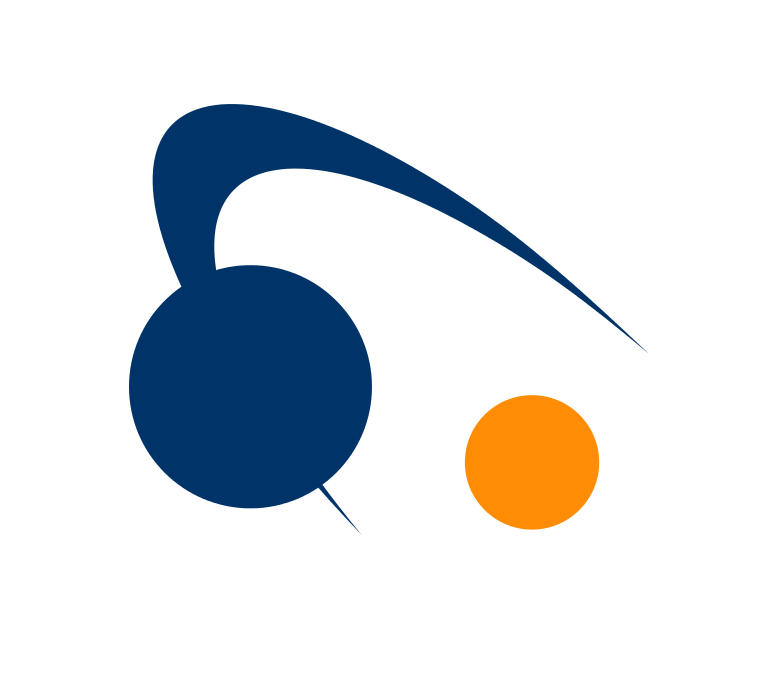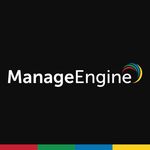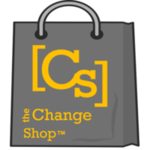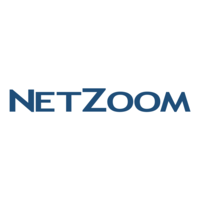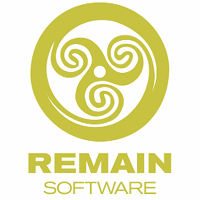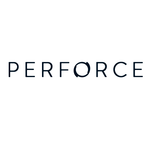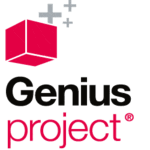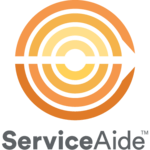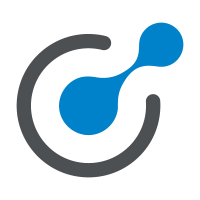Yes, most change management tools are designed to be accessible from numerous devices and platforms. This provides flexibility and ease for users who may need to make changes on the fly or from several devices. These solutions are frequently cloud-based, which means that all updates and information are saved in a single area and accessible from any device with an internet connection. This enables uniformity and collaboration among teams, regardless of location or preferred device.
List of 20 Best Change Management Tools
LabiKnow is a knowledge base platform designed to streamline customer support and enhance transparency for your business. With LabiKnow, you can effortlessly create a user-friendly help center site, share important company updates and announcements,...Read More LabiKnow
Unimus is a Network Automation and Configuration Management software that simplifies network deployment and streamlines user experience. With Unimus, you dont need to master complicated abstraction or templating languages. Our user-friendly interface...Read More Unimus
ManageEngines ServiceDesk Plus is a cloud-based software that caters to all your help desk and asset management needs. By bringing together ticketing, asset tracking, purchasing, project and contract management, and a knowledge base, ServiceDesk Plus...Read More ManageEngine ServiceDesk Plus
the Vyapin Active Directory Auditing Tool is astrong and efficient solution for monitoring and documenting all modifications made to your AD settings in real-time. With extensive monitoring of user actions and precise identification of the time and l...Read More Vyapin Active Directory Auditing Tool
The Change Shop, an advanced solution designed to streamline change management procedures for businesses of all sizes. Our platform boasts an array of cutting-edge features, such as feedback analysis, commitment tracking, and improvement actions, to...Read More The Change Shop
Smart CAPA - a leading software solution designed to effectively manage and resolve complaints, holds, and deviations. With its efficient root cause analysis process, it helps your organization create corrective and preventive action plans for succes...Read More Smart CAPA
Canfigure is a dynamic asset management solution that empowers businesses with customizable workflow options. It can be seamlessly integrated into any industry, offering support for IT service management, change management, and engineering tool manag...Read More Canfigure
Tabnine is a AI code completion tool that elevates coding productivity and speed for developers. Its cutting-edge technology and integration with popular IDEs deliver comprehensive suggestions for both line and function completion. Eliminate the hass...Read More Tabnine
NetZoom is a DCIM solution that simplifies the management of physical, virtual, and cloud infrastructures for data center professionals. It enables efficient capacity planning, power consumption monitoring, and compliance maintenance while offering r...Read More NetZoom
IssueTrak is a IT service desk software solution. Designed to streamline operations, boost productivity, and ensure customer satisfaction, IssueTrak features a user-friendly interface, customizable business rules, and reliable support. Simplify manag...Read More IssueTrak
Remain Software is a versatile change management system that offers powerful solutions for various platforms including Windows, Linux, macros projects, communication, and enterprise management systems. It is a highly trusted option for talent acquisi...Read More Remain Software
Helix TCM is a test case management solution that streamlines and optimizes every step of your testing process. This robust tool empowers efficient collaboration and ensures top-notch outcomes at every stage of your software development. Dont leave y...Read More Helix TCM
Conexia is a leading risk management software that collaborates closely with clients to enhance results and lessen expenses. By prioritizing operational excellence, we strive to implement top-notch procedures and cutting-edge technology, leading to s...Read More Conexia
Genius Project is a change management solution. Designed to provide a comprehensive range of features, this software guarantees the utmost security for your valuable customer data. Its user-friendly interface and customizable settings ensure a seamle...Read More Genius Project
Vyapin NTFS Change Auditor - an advanced tool designed to track and report any changes made to NTFS files, shares, and folders. With our comprehensive reports and a complimentary 15-day trial, you can easily monitor all modifications and maintain the...Read More Vyapin NTFS Change Auditor
nOps is a tool that simplifies resource changes. Our software is built to effortlessly create and maintain cloud CMDBs, while providing instant alerts. Our platform also offers infrastructure documentation, making change management secure and user-fr...Read More nOps
AssurX Change is a robust software solution designed to streamline change management processes. It simplifies the evaluation, planning, implementation, and documentation processes for organizations. With its user-friendly interface, this powerful too...Read More AssurX Change
ServiceAide is a top-performing change management tool with a reputation for its powerful and effective capabilities. It provides a comprehensive platform for managing change requests, offering a wide range of pre-approved templates and a well-define...Read More ServiceAide
Ralleo the change management software that integrates all Excel spreadsheets into one user-friendly interface for efficient planning and tracking of real-time data. With Ralleo, reduce risks, improve health and safety, and enhance resource efficiency...Read More Ralleo
Learn More About Change Management Tools
- What Is Change Management Tools?
- What Are The Recent Trends In Change Management Tools?
- Benefits Of Using Change Management Tools
- Important Factors To Consider While Purchasing Change Management Tools?
- What Are The Key Features To Look For In Change Management Tools?
- Why Do Businesses Need Change Management Tools?
- How Much Time Is Required To Implement Change Management Tools?
- What Is The Level Of Customization Available In Change Management Tools?
- Which Industries Can Benefit The Most From Change Management Tools?
- Conclusion
What Is Change Management Tools?
Change management tools are software solutions that assist firms plan, implement, and track changes inside their organization. These tools are critical for firms that want to successfully manage periods of change, such as mergers, organizational restructuring, or the introduction of new processes or technology. One of the primary benefits of change management systems is their ability to streamline the change process.
This includes the ability to create and manage change requests, assign tasks and responsibilities to team members, and monitor progress and any barriers along the route. In addition, change management technologies facilitate communication and collaboration. This is required to guarantee that all stakeholders, from top management to front-line staff, are informed and engaged in the change process.
These technologies, which include email notifications, team forums, and real-time updates, enhance effective communication and openness throughout the change process. Another key component of change management tools is their capacity to assist firms in determining the impact of changes on their company. This includes assessing potential risks and determining where additional support or resources may be required.
By delivering data and insights, these solutions enable businesses to make educated decisions while minimizing the impact on their operations. Furthermore, many change management software have analytics and reporting capabilities. This enables firms to monitor the effectiveness of their change programs and make required adjustments along the way.
With the capacity to generate bespoke reports and dashboards, these technologies help firms acquire a thorough picture of how changes affect their organization. Overall, change management tools are critical for firms seeking to effectively manage and navigate through times of transition. These tools are valuable assets for any organization going through change because they may expedite procedures, facilitate communication, analyze impact, and give data.
What Are The Recent Trends In Change Management Tools?
Change management has evolved dramatically in recent years, both to technological developments and a better knowledge of effective change management tactics. As a result, there have been notable shifts in the development and application of change management technologies.
we'll look at the latest developments in change management technologies and how they may help your organization.
1. Automation And Artificial Intelligence (AI): One of the most visible developments in change management solutions is the incorporation of automation and AI technology. These solutions streamline and automate regular operations, allowing managers to focus on more important tasks. This automation also enables faster delivery of modifications and greater control over the change process.
2. Mobile Accessibility: With the advent of remote work and the widespread usage of mobile devices, change management applications are increasingly being created with mobile accessibility in mind. This implies that managers may access and control change processes from any location, at any time, making them more efficient and easy.
3. Collaborative And Communication Features: Effective communication and collaboration are critical to successful change management. That's why many of today's change management platforms include capabilities that allow teams to work on change projects in real time. These could include chat functions, document sharing, and project management tools.
4. Data Analysis And Reporting: The ability to track and evaluate data linked to change management is becoming more crucial. As a result, many solutions now offer data analytics and reporting capabilities, giving managers vital insight into the efficacy of their change initiatives. This enables better informed judgments and improves future change processes.
5. User-Friendly Interface: Another trend in change management systems is an emphasis on user-friendly interfaces. Many of the current tools are intended to be straightforward and simple to use, making the change management process more accessible to employees at all levels of a business.
6. Integration With Other Software: Change management is a complex process that frequently involves several departments and instruments. That is why many change management applications now provide integration with other software, such as project management or communication tools. This facilitates the flow of information and improves team coordination.
Benefits Of Using Change Management Tools
Change management is the process of adopting and monitoring changes within an organization. In today's fast-paced business world, firms must change swiftly to remain competitive. This is when change management techniques come into play. These tools are intended to assist organizations in properly managing and implementing changes while causing as little disturbance as possible.
But, what are the special advantages of employing change management tools?Let's have a closer look.
1. Streamlines The Change Process: One of the primary advantages of employing change management tools is that they simplify the entire change process. These technologies offer a planned and organized approach to change management, allowing organizations to plan, implement, and track changes more easily. Change management solutions use defined stages and rules to guarantee that all relevant tasks are accomplished and nothing falls through the cracks.
2. Reduces Risk And Errors: Change may be disruptive, and if not handled correctly, it can result in substantial errors and dangers for a business. Change management tools help to mitigate these risks by offering a methodical approach to executing changes. These technologies enable firms to identify possible dangers and handle them before they become serious issues. This not only decreases the possibility of errors, but also ensures a more seamless transfer to the new processes.
3. Improves Communication: Effective change management relies heavily on communication skills. Change management solutions offer a consolidated platform for communication among all stakeholders involved in the change process. This removes the possibility of misinterpretation and guarantees that everyone is on the same page. Change management tools can help create trust and reduce resistance to change by allowing for open and honest communication.
4. Improves Efficiency And Productivity: Change management tools improve organizational efficiency and production. Without these tools, change management can be stressful and time-consuming, diverting employees' attention away from their primary responsibilities. Employees can focus on their regular work while change management tools handle the process. This increases efficiency while also ensuring that the adjustment has minimal impact on business operations.
5. Offers Real-Time Insights: Change management systems provide real-time information about the status and impact of changes. Dashboards, status updates, and reporting capabilities enable enterprises to track the progress of changes in real time and make appropriate adjustments. This kind of access enables organizations to monitor the change process and make data-driven decisions to ensure its success.
Important Factors To Consider While Purchasing Change Management Tools?
As businesses and organizations evolve, change becomes an unavoidable aspect in their operations. As a result, having efficient and effective change management solutions has become critical. These solutions enable firms to respond to changes effortlessly while minimizing interruptions and increasing productivity. However, with so many options on the market, selecting the correct change management solution can be a daunting endeavor.
To make an informed decision when selecting change management solutions, consider the following factors:
1. Compatibility And Integration: Before making a purchase, make sure that the change management application is compatible with your current systems and processes. This will eliminate any conflicts or challenges in incorporating the technology into your workflow. Check to see if the product can be easily integrated with other programs to make operations more efficient.
2. User-Friendly Interface: Any tool's success is determined on user acceptance. As a result, it is critical to select a change management product with an intuitive interface that requires little training. This will guarantee a smooth rollout and increased user adoption, maximizing the tool's benefits.
3. Features And Functionality: Different change management software provide different features and functionalities. It is critical to analyze your organization's specific demands and select a tool with capabilities that meet those needs. Project planning, task management, communication tools, and reporting and analytics capabilities are some of the most important elements to consider.
4. Scalability: As your organization grows, your change management requirements may shift. As a result, it is critical to select a tool that can adapt to these changes while also meeting future requirements. This will save you time and money in the long run because you will not have to switch to a different tool when your requirements transcend the capabilities of the existing one.
5. Security And Compliance: Change management frequently involves sensitive data and proprietary information. As a result, it is critical to select a solution that prioritizes data security and compliance with industry laws. Look for tools that include data encryption, access limits, and frequent security updates to keep your information secure.
6. Customer Support: As with any other software, technical issues may emerge when utilizing a change management application. It is critical to select a product with dependable customer support in order to provide prompt assistance in the event of any complications. Look for technologies that provide 24-hour customer service across numerous channels, such as phone, email, and chat.
What Are The Key Features To Look For In Change Management Tools?
Change management solutions are vital for firms that want to effectively adopt and manage organizational changes. With so many options available, customers may find it difficult to choose the best change management tool for their individual requirements.
To help you make an informed decision, below are the important characteristics to look for in change management software.
1. Customization: Change management is not a one-size-fits-all solution. Look for solutions that allow you to customize workflows, templates, and processes based on your specific needs. This ensures that the solution integrates effortlessly with your existing procedures.
2. Collaboration And Communication: Effective change management requires extensive communication and collaboration among many teams and stakeholders. Look for platforms with features that promote effective communication, such as real-time texting, discussion forums, and collaboration spaces.
3. Automation: Change management can require repetitive and time-consuming operations. Automation tools like auto-approvals, notifications, and reminders can help to streamline the process and save time and effort.
4. Integration: Your change management solution should be compatible with your current tools and systems, such as project management software, document management systems, and HR platforms. This will make data transfer more efficient and prevent job duplication.
5. Analytics And Reporting: It is critical to understand the status and success of your change management operations. Look for solutions that provide real-time analytics and customisable reporting features for tracking key performance indicators and assessing the impact of adjustments.
6. Security And Compliance: Given the sensitive data involved in change management, security should be a key consideration. Look for technologies that provide strong security measures like data encryption, user authentication, and role-based access limits. Additionally, ensure that the tool complies with applicable requirements such as GDPR and HIPAA.
When choosing a change management solution for your business, keep these crucial elements in mind to make an informed decision. A solution that provides customization, communication, automation, integration, analytics, and security will be an invaluable resource for effectively managing and implementing change.
Why Do Businesses Need Change Management Tools?
Change management is an important part of every successful firm. It is the process of adopting and managing changes inside an organization to promote smooth transitions and reduce potential hazards. To remain competitive in today's rapidly changing business environment, firms must adapt and embrace change. This is when change management techniques come into play.
These tools offer firms a structured and efficient way to manage change. One of the key reasons firms use change management solutions is to mitigate the negative effects of change. Any change, large or small, can disrupt a company's workflows and processes, resulting in employee resistance.
Change management tools provide a step-by-step approach to successfully communicating and preparing the workforce for change, reducing opposition and increasing overall acceptance. Furthermore, change management solutions enable firms to gain a comprehensive picture of the changes being made. These solutions give a consolidated platform for documenting and tracking all changes, allowing teams to remain aligned and make educated decisions.
It also allows firms to anticipate potential hazards and develop contingency strategies to mitigate them. Another important feature of change management tools is their capacity to keep stakeholders informed and involved throughout the process. These solutions offer a variety of communication channels, including email updates, progress trackers, and dashboards, to keep stakeholders updated.
This not only encourages transparency, but it also aids in managing expectations and getting support at all levels of the organisation. In addition, change management technologies provide strong project management skills. Businesses can use these tools to allocate resources, establish timeframes, and monitor the progress of change efforts. This helps to retain accountability and ensure that modifications are implemented within the timeframe specified.
To summarize, change management tools are critical for businesses because they give a disciplined and comprehensive approach to managing change. These technologies provide a variety of benefits, including reducing the negative impact of change and increasing communication and project management, all of which contribute to a company's success and growth. With the ongoing need for adaptability and innovation, investing in a good change management solution is a prudent move for any company trying to thrive in today's fast-paced industry.
How Much Time Is Required To Implement Change Management Tools?
Implementing change management tools vary according on the product and your organization's needs. In most cases, properly implementing and integrating a change management solution into your company's procedures might take anything from a few weeks to several months. This time frame comprises initial setup and configuration, team member training, and testing to ensure the tool achieves the expected results.
The complexity of the tool and the level of customisation required can both influence implementation time. Simple tools with limited functionality may require less time to implement than more extensive and powerful technologies. Before deploying a change management tool, make sure to give yourself adequate time for proper planning and preparation.
This includes assessing your organization's specific needs, establishing clear goals and objectives, and involving all important stakeholders in the decision-making process. Additionally, the size and structure of your firm can have an impact on implementation time. Larger firms with various departments and staff may need more time for training and smooth integration of the application, whilst smaller ones may be able to deploy it sooner.
It should also be noted that installing a change management tool is a continuous process. Ongoing maintenance, upgrades, and periodic evaluations are required to guarantee that the tool meets your organization's changing demands. Finally, the time necessary to deploy a change management tool is determined by a variety of circumstances, but careful planning, training, and involvement from all stakeholders will help ensure a successful and timely implementation.
What Is The Level Of Customization Available In Change Management Tools?
Change Management Tools are critical for any organization seeking to implement seamless and efficient changes. These tools let firms to document, track, and monitor changes to their processes, systems, and procedures. However, not every change management application provides the same level of customisation. Understanding the level of customisation offered by change management solutions is critical for making an informed decision for your firm.
we'll go over the many levels of customization available in change management solutions to help you select the best one for your company.
1. Basic Customization: Most change management platforms allow you to adjust fields, labels, and data types to meet your organization's needs. This level of customization enables users to change the tool's interface and make it more user-friendly for their team. It also allows users to add, amend, or delete data fields to collect the information they need for their change processes.
2. Advanced Customization: Some change management applications provide advanced customization capabilities, allowing users to develop and modify workflows, forms, and reports. Advanced customization allows customers to construct workflows that are tailored to their specific procedures, as well as bespoke forms for gathering essential data. These technologies also allow users to create bespoke reports that track the progress and success of their change projects.
3. Integration Customisation: Businesses that employ numerous software applications require integration customisation. This level of customisation enables customers to combine their change management solution with other applications, such as project management or communication software. It simplifies the change management process by eliminating the need to switch between various tools, saving time and enhancing efficiency.
4. Branding Customization: Businesses can tailor their change management application by adding their logo, colors, and other branding components. It gives the tool a more professional and consistent appearance, which may boost user adoption and engagement.
5. API Modification: API modification benefits enterprises with more sophisticated procedures. Users can extend the capabilities of their change management tools by creating new applications or integrating with other software solutions via APIs. This level of customisation enables firms to create a personalized change management system that suits their individual requirements.
Which Industries Can Benefit The Most From Change Management Tools?
Change management tools are critical for organizations to effectively adopt and manage changes to their processes, systems, and structures. While these tools can aid a variety of businesses, certain industries stand to benefit the most from their utilization.
1. Information Technology (IT) Industry: The IT industry is continually changing, with new technology, processes, and systems being introduced at a quick pace. IT organizations can use change management systems to seamlessly incorporate these changes, assuring smooth company operations and lowering the chance of disruptions or downtime.
2. Healthcare Business: The healthcare business is heavily regulated, and any changes in regulations, methods, or technologies can have serious consequences for patient care and safety. Change management technologies can help healthcare companies implement changes efficiently and with least disturbance to their everyday operations.
3. Manufacturing Industry: Manufacturing organizations are continuously dealing with change, whether it's implementing new equipment, methods, or regulations. Change management solutions can assist them streamline these adjustments, resulting in enhanced productivity, lower costs, and better product quality.
4. Financial Services Industry: The financial services industry is subject to continual regulatory changes, market fluctuations, and changing customer demands. These firms may use change management technologies to keep ahead of the curve, assuring compliance, eliminating risks, and encouraging smooth consumer experiences.
5. Retail Industry: In the fast-paced retail industry, consumer behavior, market trends, and competition are constantly changing. Change management solutions can help businesses adjust to these changes more successfully, allowing them to remain competitive and meet customer expectations.
6. Telecommunications sector: The telecommunications sector is constantly expanding, with new technology and services launched on a regular basis. Change management solutions can help these businesses manage these changes, assuring smooth adoption and integration, and mitigating possible disruptions.
Conclusion
To summarize, investing in a change management tool can significantly improve the success and efficiency of executing change inside your firm. You can choose the ideal tool for your aims and objectives by carefully examining your individual demands and evaluating the numerous features and functionality provided by different tools. Remember that the key to effective change management is not only the tool itself, but also the strategy and method used.
As a result, it is critical to involve key stakeholders, clearly define expectations and goals, and conduct ongoing analyses and adjustments as needed throughout the change process. Furthermore, it is crucial to choose a tool from a renowned and established provider, as this can ensure continued support and updates to stay up with changing industry trends and improvements.
Finally, by carefully evaluating all considerations and making an informed decision, you may choose the best change management solution to assist your firm adapt and grow in an ever-changing business world.
Change Management Tools FAQ's
Can Change Management Tools Be Accessed Across Multiple Devices And Platforms?
Is Change Management Tools Future-Proof And Adaptable To Emerging Technologies Like Ai, Blockchain or Iot?
Yes, change management solutions are future-proof and adaptable to upcoming technologies such as artificial intelligence, blockchain, and the Internet of Things. These tools are intended to be adaptable and can be tailored to fit the changing demands of enterprises. They can also integrate with new technology to ensure that changes are implemented seamlessly. Furthermore, many change management technologies are regularly updated with the most recent technological breakthroughs, making them flexible to future changes.
Is There A Free Trial Offered To Assess Change Management Tools Before Committing?
Yes, many change management software provide a free trial period to evaluate their features and functionality before committing to a paying subscription. It enables users to evaluate the tool's capabilities and assess whether it meets their individual needs and expectations. The free trial period might last anywhere from 14 to 30 days. This trial period provides a valuable opportunity for firms to assess the tool's effectiveness and make an informed decision before investing in it.
Does Change Management Tools Offer Data Security Features And Meet Regulatory Compliance Standards?
Yes, many change management platforms provide data security features to assist firms protect sensitive information and meet regulatory compliance requirements. These features may include encryption, access controls, and audit trails to verify that modifications are monitored and approved. Additionally, certain products may include built-in functionality to assist firms in complying with rules such as GDPR or HIPAA. It is critical to investigate and select a change management platform that is compatible with your organization's specific compliance requirements.
Can Change Management Tools Integrate Seamlessly With Existing Tools And Platforms?
Yes, most change management technologies are designed to work smoothly alongside an organization's existing tools and platforms. These solutions provide a variety of connection options, including APIs, plugins, and connectors, to ensure efficient communication and data sharing between systems. Businesses may shorten their change management processes and increase overall efficiency by integrating seamlessly. It also eliminates the need for human data entry, lowering the risk of errors.

